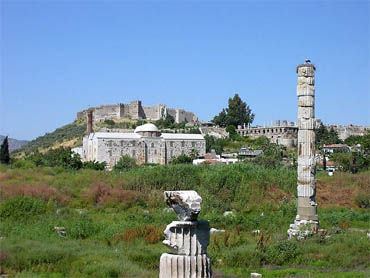Here at Geodepress we like to focus on education, especially as we highlight the Zenobia Book Series. Education is very important to Zenobia. Not only did she train physically with her bow and arrow and sword but she challenged herself mentally by learning all that was available to her. We've been sharing interesting facts from each of the Seven Wonders of the Ancient World and hope we've broaden your knowledge of Ancient History. Like many other history buffs, we are fascinated by the Ancient Seven Wonders.
Zenobia visits two of these Wonders in book one, Zenobia- Birth of a Legend. Read the post at: http://geodepress.com/lighthouse-of-alexandria-one-of-the-seven-ancient-wonders-of-the-world/
"Many historians now believe that the list served as a guidebook for ancient "tourists" traveling to see the revered sites.
The "wonders of the world" concept dates back to the fifth century B.C., when the Greek historian Herodotus contemplated the amazing achievements of art and architecture created by the Persians and the Greeks.
However, Antipater of Sidon, who wrote in the second century B.C., is credited with putting together the first list of wonders."
Oct. 18, 2006 - Read full article at: http://abcnews.go.com/GMA/7Wonders/story?id=2583185

My favorite artist Howard David Johnson has captured the beautiful Seven Wonders.
Take a look for yourself at: http://www.howarddavidjohnson.com/7wonders.htm
Oct. 18, 2006 - Read full article at: http://abcnews.go.com/GMA/7Wonders/story?id=2583185

Howard David Johnson
My favorite artist Howard David Johnson has captured the beautiful Seven Wonders.
Take a look for yourself at: http://www.howarddavidjohnson.com/7wonders.htm
Attention Teachers: Howard David Johnson's pictures are available for classroom use. E-mail for permission at : info@howarddavidjohnson.com or check with your school library. View at : http://www.howarddavidjohnson.com/sevenwonders.htm


















 lillisphotography/iStockphoto.com
lillisphotography/iStockphoto.com Grand Tour Collection/Corbis
Grand Tour Collection/Corbis LeitnerR/iStockphoto.com
LeitnerR/iStockphoto.com G. Dagli Orti/De Agostini/Getty Images
G. Dagli Orti/De Agostini/Getty Images aeduard/iStockphoto.com
aeduard/iStockphoto.com Atlantide Phototravel/Corbis
Atlantide Phototravel/Corbis Vanni Archive/Corbis
Vanni Archive/Corbis grublee/iStockphoto.com
grublee/iStockphoto.com
 G. Nimatallah/De Agostini/Getty Images
G. Nimatallah/De Agostini/Getty Images







